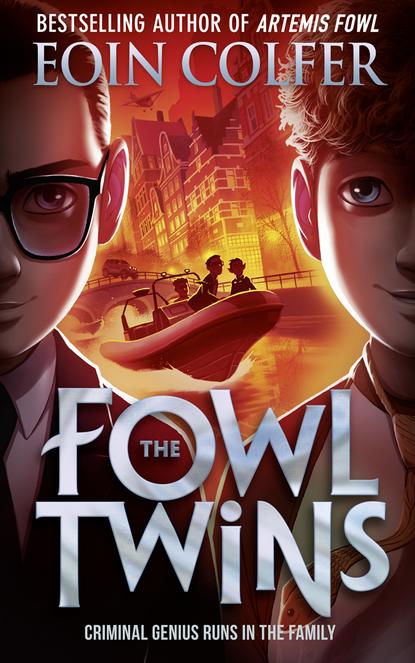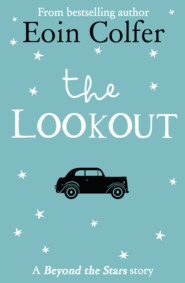По всем вопросам обращайтесь на: info@litportal.ru
(©) 2003-2024.
✖
The Fowl Twins
Настройки чтения
Размер шрифта
Высота строк
Поля
Villa Éco was a stunning achievement, not least because of all the hoops the county council had made Artemis Senior jump through just for planning permission. Indeed, the Fowl patriarch had on several occasions considered using a few of his old criminal-mastermind methods of persuasion just to cut through the miles of red tape, but eventually he managed to satisfy the local councillors and push ahead with the building.
And what a building it was. Totally self-sufficient, thanks to super-efficient solar panels and a dozen geothermal screws that not only extracted power from the earth but also acted as the building’s foundation. The frame was built from the recycled steel yielded by six compacted cars and had already withstood a hurricane during construction. The cast-in-place concrete walls were insulated by layers of plant-based polyurethane rigid foam. The windows were bulletproof, naturally, and coated with metallic oxide to keep the heat where it should be throughout the seasons. The design was modern but utilitarian, with a nod to the island’s monastic heritage in the curved walls of its outbuildings, which were constructed with straw bales.
But the real marvels of Villa Éco were discreetly hidden until they were called upon. Artemis Senior, Artemis Junior and Myles Fowl had collaborated on a security system that would bamboozle even the most technically minded home invader, and an array of defence mechanisms that could repel a small army.
There was, however, an Achilles heel in this system, as the twins were about to discover. This Achilles heel was the twins’ own decency and their reluctance to unleash the villa’s defences on anyone.
On this summer evening, the twins’ mother was delivering a lecture at New York University with her husband in attendance. Some years previously, Angeline had suffered from what Shakespeare called ‘the grief that does not speak’,and, in an effort to understand her depression, had completed a mental-health doctorate at Trinity College and now spoke at conferences around the world. The twins were being watched over by the house itself, which had an Artemis-designed Nano Artificial Neural Network Intelligence system, or NANNI, to keep an electronic eye on them.
Myles was collecting seaweed for his homemade-hair-gel fermentation silo, and Beckett was attempting to learn seal language from a dolphin just offshore.
‘We must be away, brother,’ Myles said. ‘Bedtime. Our young bodies require ten hours of sleep to ensure proper brain development.’
Beckett lay on a rock and clapped his hands. ‘Arf,’ he said. ‘Arf.’
Myles tugged at his suit jacket and frowned behind the frames of his thick-rimmed glasses. ‘Beck, are you attempting to speak in seal language?’
‘Arf,’ said Beckett, who was wearing knee-length cargo shorts and his gold necktie.
‘That is not even a seal. That is a dolphin.’
‘Dolphins are smart,’ said Beckett. ‘They know things.’
‘That is true, brother, but a dolphin’s vocal cords make it impossible for them to speak in the language of a seal. Why don’t you simply learn the dolphin’s language?’
Beckett beamed. ‘Yes! You are a genius, brother. Step one, swap barks for whistles.’
Myles sighed. Now his twin was whistling at a dolphin, and they would once again fail to get to bed on time.
Myles stuffed a handful of seaweed into his bucket. ‘Please, Beck. My brain will never reach optimum productivity if we don’t leave now.’ He tapped the right arm of his black plastic spectacle frames, activating the built-in microphone. ‘NANNI, help me out. Please send a drobot to carry my brother home.’
‘Negative,’ said the house system in the strangely accented female voice that Artemis had selected to represent the AI. It was a voice that both twins instinctively trusted for some reason.
Myles could hear NANNI through bone-conduction speakers concealed in the arms of his glasses.
‘Absolutely no flying Beckett home, unless it’s an emergency,’ said NANNI. ‘Mother’s orders, so don’t bother arguing.’
Myles was surprised that NANNI’s sentences were unnecessarily convoluted. It seemed as though the AI were developing a personality, which he supposed was the point. When Artemis had first plugged NANNI into the system, so to speak, her responses were usually limited to one-word answers. Now she was telling him not to bother arguing. It would be fascinating to see how her personality would develop.
Providing NANNI doesn’t become too human, thought Myles, because most humans are irritating.
At any rate, it was ridiculous that his mother refused to authorise short-range flights for Beckett. In tests, the drone robots had only dropped the dummy Becketts twice, but his mother insisted the drobots were for urgent situations only.
‘Beckett!’ he called. ‘If you agree to come back to the house, I will tell you a story before bed.’
Beckett flipped over on the rock. ‘Which story?’ he asked.
‘How about the thrilling discovery of the Schwarzschild radius, which led directly to the identification of black holes?’ suggested Myles.
Beckett was not impressed. ‘How about the adventures of Gloop and Angry Hamster in the Dimension of Fire?’
Now it was Myles’s turn to be unimpressed. ‘Beck, that’s preposterous. Fish and hamsters do not even share the same environment. And neither could survive in a dimension of fire.’
‘You’re preposterous,’ said Beckett, and went back to his whistling.
The crown of Beck’s head will be burned by the evening UV rays, thought Myles.
‘Very well,’ he said. ‘Gloop and Angry Hamster it is.’
‘And Dolphin,’ said Beckett. ‘He wants to be in the story too.’
Myles sighed. ‘Dolphin too.’
‘Hooray!’ said Beckett, skipping across the rocks. ‘Story time. Wrist bump?’
Myles raised his palm for a bump and wondered, If I’m the smart one, why do we always do exactly what Beck wants us to?
Myles asked himself this question a lot.
‘Now, brother,’ he said, ‘please say goodnight to your friend, and let us be off.’
Beckett turned to do as he was told, but only because it suited him.
If Beckett had not turned to bid the dolphin farewell, then perhaps the entire series of increasingly bizarre events that followed might have been avoided. There would have been no nefarious villain, no ridiculously named trolls, no shadowy organisations, no interrogations by a nun (which are known in the intelligence community as nunterrogations, believe it or not) and a definite lack of head lice. But Beckett did turn, precisely two seconds after a troll had surged upwards through the loose shale at the water’s edge and collapsed on to the beach.
Fairies are defined as being ‘small, humanoid, supernatural creatures possessed of magical powers’, a definition that applies neatly to elves, gnomes, sprites and pixies. It is, however, a human definition, and therefore as incomplete as human knowledge on the subject. The fairies’ definition of themselves is more concise and can be found in the Fairy Book, which is their constitution, so to speak, the original of which is behind crystal in the Hey Hey Temple in Haven City, the subterranean fairy capital. It states:
FAIRY, FAERIE OR FAERY: A CREATURE OF THE EARTH. OFTEN MAGICAL. NEVER WILFULLY DESTRUCTIVE.
No mention of small or humanoid. It may surprise humans to know that they themselves were once considered fairies and did indeed possess some magic, until many of them strayed from the path and became extremely wilfully destructive, and so magic was bred out of humans over the centuries, until there was nothing left but an empath here and there, and the occasional telekinetic.
Trolls are classed as fairies by fairies themselves, but would not be so categorised by the human definition, as they are not magical – unless their longevity can be considered supernatural. They are, however, quite feral and only slightly more sentient than the average hound. Another interesting point about trolls is that fairy scholars of their pathologies have realised that trolls are highly susceptible to chemically induced psychosis while also tending to nest in chemically polluted sites, in much the same way as humans are attracted to the sugar that poisons them. This chemical poisoning often results in uncharacteristically aggressive behaviour and uncontrollable rage. Again, similar to how humans behave when experiencing sugar deprivation.
But this troll was not sick, sluggish or aggressive – in fact, he was in remarkable physical health, all pumping limbs and scything tusks, as he followed his second most powerful instinct: REACH THE SURFACE. (Trolls’ most powerful instinct being: EAT, GOBBLE, DEVOUR.)
This particular troll’s bloodstream was clear because he had never swum across a chromium-saturated lake and he had never carved out his burrow in mercury-rich soil. Nevertheless, healthy or not, this specimen would never have made it to the surface had the Earth’s crust under Dalkey Island not been exceptionally thin, a mere two and a quarter miles, in fact. This troll was able to squeeze himself into fissures that would have made a claustrophobe faint, and he wriggled his way to the open air. It took the creature four sun cycles of agonisingly slow progress to break through, and you might think the cosmos would grant the fellow a little good fortune after such Herculean efforts, but no, he had to pop out right between the Fowl Twins and Lord Teddy Bleedham-Drye, who was lurking on a mainland balcony and spying on Dalkey Island through a telescopic monocular, thus providing the third corner of an irresistible triangular vortex of fate.
So, the troll emerged, joint by joint, reborn to the atmosphere, gnashing and clawing. And, in spite of his almost utter exhaustion, some spark of triumph drove him to his feet for a celebratory howl, which was when Lord Teddy, for diabolical reasons which shall presently be explored, shot him.
Once the shot had been fired, the entire troll-related rigmarole really got rigmarolling, because the microsecond that NANNI’s sensors detected the bullet’s sonic boom, she dispensed with her convoluted sentences and without a word upgraded the villa’s alert status from beige to red, sounded the alarm klaxon, and set the security system to siege mode. Two armoured drobots were dispatched from their charging plates to extract the twins, and forty decoy flares were launched from mini mortar ports in the roof as countermeasures to any infrared guided missiles that may or may not be inbound.
This left the twins with approximately twenty seconds of earthbound liberty before they would be whisked into the evening sky and secured in the eco-house’s ultrasecret safe room, blueprints of which did not appear on any set of plans.
A lot can happen in twenty seconds. And a lot did happen.
Firstly, let us discuss the marksman. When I say Lord Teddy shot the troll, this is possibly misleading, even though it is accurate. He did shoot the troll, but not with the usual explosive variety of bullet, which would have penetrated the troll’s hide and quite possibly killed the beast through sheer shock trauma. That was the absolute last thing Lord Teddy wanted, as it would void his entire plan. This particular bullet was a gas-powered cellophane virus (CV) slug that was being developed by the Japanese munitions company Myishi and was not yet officially on the market. In fact, Myishi products rarely went into mass production, as Ishi Myishi, the founder and CEO, made quite a lot of tax-free dollars giving a technological edge to the world’s criminal masterminds. The Duke of Scilly was a personal friend and possibly his best customer and had most of his kit sponsored by Ishi Myishi so long as the duke agreed to endorse the products on the dark web. The CV bullets were known as ‘shrink-wrappers’ by the development team, and they released their viruses on impact, effectively wrapping the target in a coating of cellophane that was porous enough to allow shallow breathing but had been known to crack a rib or two.
And then there is the physicality of the troll itself. There are many breeds of troll. From the three-metre-tall behemoth Antarctic Blue, to the silent jungle killer the Amazon Heel Claw. The troll on Dalkey Island beach was a one-in-a-million anomaly. In form and proportion, he was the perfect Ridgeback, with the distinctive thick comb of spiked hair that ran from brow to tailbone, and the blue-veined grey fur on his chest and arms all present and correct. But this creature was no massive predator. In fact, he was a rather tiny one. Standing barely twenty centimetres high, the troll was one of a relatively new variety that had begun to pop up in recent millennia since fairies were forced deep in the Earth’s mantle. Much in the same way as schnauzer dogs had miniature counterparts known as toy schnauzers, some troll breeds also had their shrunken varieties, and this troll was one of perhaps half a dozen toy Ridgebacks in existence and the first to ever reach the surface.






